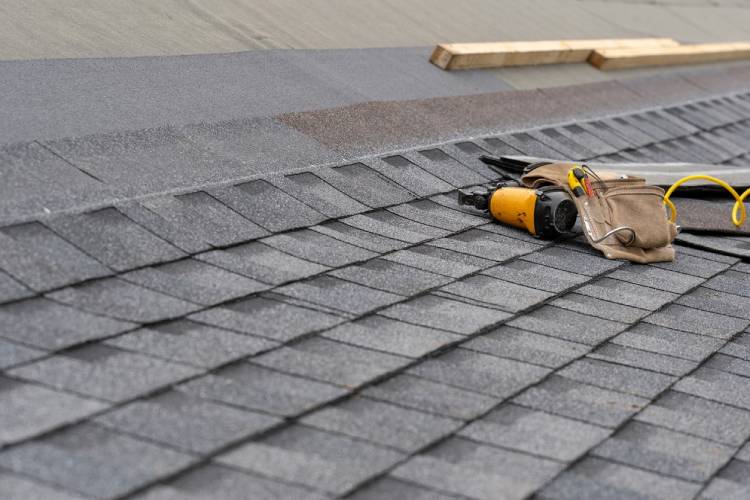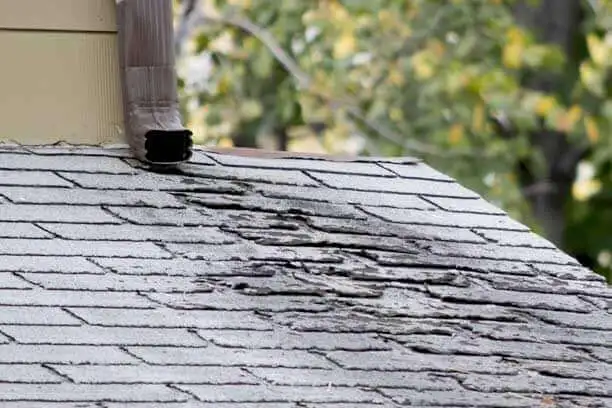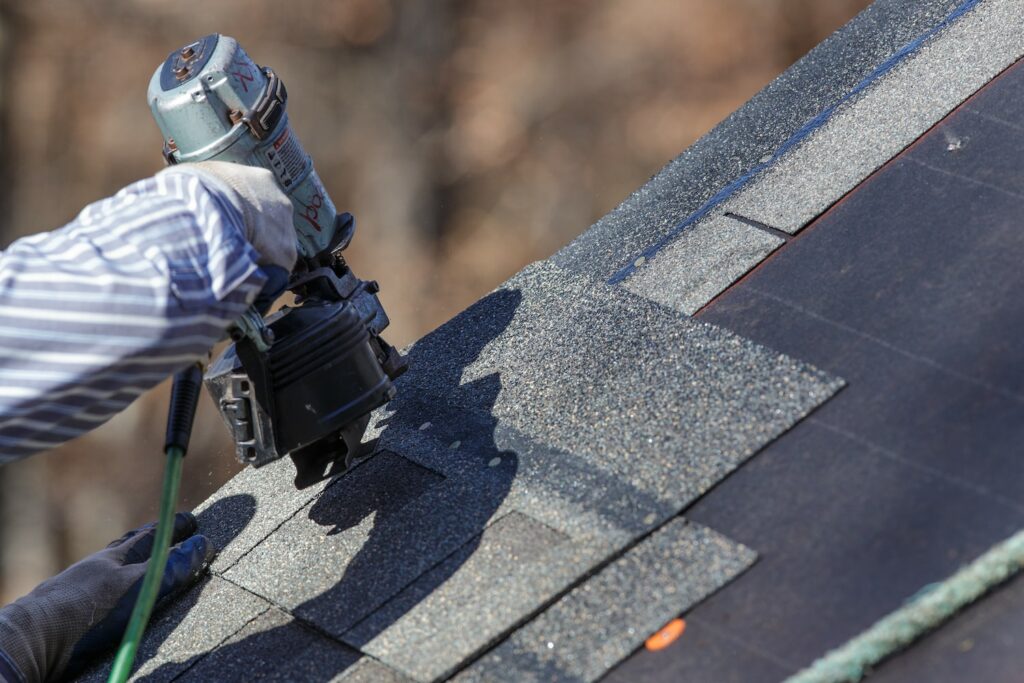Preventative Roofing Maintenance: Tips to Prevent Expensive Fixings
To stay clear of costly repairs, you need to check your roofing consistently for missing out on or harmed tiles, clean your downspouts and seamless gutters to avoid obstructions, and trim looming branches. Don't forget to look for signs of leaks and ensure proper ventilation in your attic. Setting up expert assessments a minimum of once a year can assist catch hidden issues early. These straightforward steps can considerably prolong your roofing's life expectancy, and there's plenty more you can do to protect your investment.
Check Your Roof Consistently
When you inspect your roofing on a regular basis, you can capture potential issues prior to they end up being pricey repair work. Beginning by looking for missing, split, or crinkling tiles; these are indications that your roofing system might require interest. Try to find any type of visible wear around chimneys, vents, and flashing, as these locations are usually vulnerable to leakages. Focus on any type of sagging or unequal sections, which might suggest structural issues.
After a storm, it's important to evaluate your roofing system for damage created by high winds or heavy particles. Don't forget to check the underside of your roof in the attic room; look for indicators of wetness or mold, which can show leakages.
Clean Rain Gutters and Downspouts
Routine roof covering evaluations naturally bring about a crucial job: cleansing your rain gutters and downspouts. Blocked seamless gutters can trigger water to support, causing prospective roof covering leaks and architectural damages. To prevent these concerns, make it a routine to check your seamless gutters a minimum of twice a year, especially after heavy storms or fall when leaves gather.
Don't forget to check downspouts for blockages. If water isn't moving freely, you may require to use a plumbing technician's snake or a tube to remove the obstruction.
Address Overhanging Branches
Looming branches can position a severe risk to your roof covering, so it is necessary to trim them routinely. Not just can they cause damage throughout storms, but they can also invite pests. Make it a practice to inspect for any indicators of wear or damage to maintain your roof covering in top form.
Trim Frequently
One of the most vital steps in roof upkeep is to trim those branches that hang too close to your home. Frequently cutting back these branches maintains your roof covering clear and decreases the danger of leakages and pests. You don't need to tackle this task alone; employing a professional arborist can guarantee safe and effective trimming, safeguarding your roofing and enhancing your home's total look.
Examine for Damage
 roof repair
roof repair
Look for Damaged or Missing Out On Tiles
It's important to examine your shingles consistently for any damages or missing out on items. Replace missing out on tiles immediately to protect against additional problems if you spot any concerns. Keep an eye on just how the weather impacts your roofing, as severe problems can lead to tear and use.
Examine Frequently for Damages
Consistently checking your roofing system for damages is crucial to maintaining its stability and extending its life-span. Evaluate your roof covering after hefty storms or strong winds, as these problems can remove or damage shingles. By making roofing system evaluations a routine part of your maintenance regimen, you can catch issues early and conserve on your own from costly repair work down the line.
Change Missing Out On Shingles Immediately
After looking for any damages throughout your assessments, you may find that some roof shingles are missing out on or compromised. Do not wait to change them; prompt activity can stop additional problems. Missing out on tiles reveal your roof to wetness, which can cause leakages and even more substantial damage gradually.
Make sure to make use of tiles that match your roof covering's shade and design for a smooth look. Keeping your roofing in leading shape is crucial for securing your home and preventing expensive repairs down the line.
Display Climate Effect Regularly
As tornados roll through your area, maintaining a close eye on your roof comes to be essential. After each tornado, take a moment to inspect your roof covering for any harmed or missing roof shingles. Search for granules in your seamless gutters, which can indicate deterioration. If you detect any type of roof shingles that are fractured, curled, or completely gone, resolve the concern right away to avoid water leaks and further damages. Climbing up onto the roofing isn't always essential; you can commonly identify problems from the ground with binoculars. Don't neglect to check for debris build-up, as it can trap dampness and cause rot. Routine surveillance aids you catch tiny issues before they escalate, saving you money and time in the lengthy run.
 roof repair
roof repairGuarantee Proper Air Flow
While many homeowners focus on the outside and architectural aspects of their roofing systems, guaranteeing proper ventilation is vital for maintaining its longevity and effectiveness. Poor air flow can lead to warm accumulation and moisture build-up, which can cause damages over time.
Examine your vents frequently to assure they're not blocked by insulation or particles. If you see any signs of mold and mildew or mildew, it could suggest inadequate ventilation. Additionally, think about making use of a powered ventilator if your home struggles with air flow. Proper air flow not just improves your roof's life expectancy but likewise improves energy performance, keeping your home comfy year-round. By taking these steps, you're investing in your roof's wellness and avoiding pricey fixings down the line.
Seek Indications of Leaks
Appropriate air flow helps stop dampness buildup, but also with great airflow, it's crucial to maintain an eye out for signs of leakages. Begin by examining your ceilings and walls for water discolorations or discoloration, which can suggest a leakage over.
Outside, examine your roof covering for missing tiles, fractures, or harmed flashing, as these vulnerabilities can bring about leakages. Focus on areas around skylights, vents, and smokeshafts, where leakages typically happen. If you see any signs, act rapidly to address them prior to they intensify. Remember, capturing leaks early can conserve you from expensive repairs in the future. Consistently examining for these indications will assist maintain your roof covering's honesty and keep your home risk-free and completely dry.
Set Up Expert Examinations
 roof repair
roof repair
Aim for a minimum of one inspection annually, preferably in the springtime or fall, to line up with seasonal modifications. Throughout these assessments, specialists can determine possible threats like missing roof shingles, damaged blinking, or signs of mold. They'll additionally check for debris accumulation that can result in water merging.
Don't await noticeable indicators of problem; taking proactive steps can prolong your roofing system's life expectancy. Spending in normal inspections not just protects your home however also offers you tranquility of mind recognizing your roofing system remains in good condition.
Often Asked Concerns
How Often Should I Execute Roof Inspections?
You need to do roofing system examinations at the very least twice a year, preferably in spring and autumn. Regular checks assist you find potential issues early, conserving you time and cash on expensive fixings down the line.
What Devices Do I Required for Roof Upkeep?
For roof covering upkeep, you'll need a durable ladder, safety and security harness, roof covering nails, a hammer, an utility knife, caulk, a trowel, and a flashlight. Do not neglect gloves and safety and security goggles to maintain on your own safeguarded!
Can I Tidy My Roof Covering Myself?
Yes, you can clean your roof on your own. Just make specific you have the right tools, wear safety and security equipment, and comply with correct methods. It's vital to be careful to prevent crashes and assure efficient cleansing.
Just How Can I Determine Roofing System Leaks Early?
To recognize roof leaks early, you'll intend to examine your roofing on a regular basis. Seek water discolorations, mold, or missing out on roof shingles. Listen after hefty rain, and do not think twice to check the attic for damp places.
What Are the Signs I Required a New Roof?
If you click the button see crinkled or missing out on shingles, persistent leaks, or water discolorations on ceilings,You'll need a brand-new roof covering. Additionally, if your roof covering's age surpasses 20 years, it's smart to consider substitute quicker instead of later on.
To prevent costly repair services, you must evaluate your roofing regularly for missing or damaged tiles, clean your rain gutters and downspouts to stop blockages, and trim overhanging branches. Missing out on shingles expose your roof covering to dampness, which can lead to leakages and more comprehensive damage over time.
After each storm, take a moment to check your roof covering for any damaged or missing shingles.Outside, analyze your roofing system for missing roof shingles, fractures, or harmed blinking, as these susceptabilities can lead to leakages.To recognize roof covering leaks early, you'll want to examine your roof covering frequently.